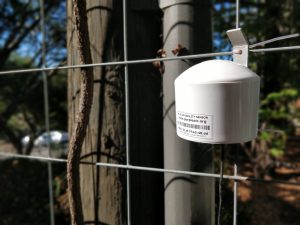 Until relatively recently, air quality monitoring has only been performed by air quality regulatory agencies using expensive, sophisticated monitoring devices subject to strict siting and quality-assurance requirements; data are compared against national and state health-based regional air quality standards. Within the past few years, low-cost ($100-$2,500) air sensors have become commercially available in a wide variety of designs and capabilities.
Until relatively recently, air quality monitoring has only been performed by air quality regulatory agencies using expensive, sophisticated monitoring devices subject to strict siting and quality-assurance requirements; data are compared against national and state health-based regional air quality standards. Within the past few years, low-cost ($100-$2,500) air sensors have become commercially available in a wide variety of designs and capabilities.
Low-cost sensors vary widely in performance and reliability, and measure very localized air quality in short periods of time, meaning data do not always align with the regional air quality health standards. There are efforts underway at the state and national levels to assess the performance of the low-cost air sensors and to develop ways to look at the short-term localized data in terms of health effects.
The South Coast Air Quality Management District (SCAQMD) has developed an Air Quality Performance Evaluation Center (AQ-SPEC) to evaluate the viability of low-cost air sensors. The evaluation consists of both field and laboratory studies of the sensors. In the laboratory, they have the ability to manipulate many factors that could affect the sensors’ performance, including temperature and humidity. For more details, see SCAQMD’s paper on Laboratory Evaluation of Low-Cost Sensors. Visit the AQ-SPEC webpage for additional information about the program and results.
PurpleAir Sensors and Community Partners
One of the more popular low-cost air sensors that have performed well, as evaluated by SCAQMD AQ-SPEC, is made by the company PurpleAir. These sensors have the ability to detect fine and ultra-fine particulates (PM10 and PM2.5, respectively). Data is shared through the PurpleAir sensor map. The data is uploaded in real time and available for anyone to see.
Low-cost air sensors, such as PurpleAir, provide informative data, and are a popular tool for community members to understand localized, neighborhood-specific air quality conditions, providing additional information to the regional conditions monitored by the District’s more sophisticated air quality monitoring network. However, low-cost air sensors do not meet federal, state, or local regulatory requirements for air quality monitoring, air quality warnings, or enforcement. Therefore, the District cannot use sensor data for any enforcement or regulatory purposes.
At the December 2018 meeting, the District’s Board of Directors approved the District to enter into agreements with community partners interested in installing District-owned PurpleAir sensors at select locations throughout the county. The District is looking to provide these sensors as a tool for communities to better understand localized air quality conditions. Please see here and here for more information. Interested community partners should download a copy of the low-cost sensors use agreement and contact SensorsGroup@sbcapcd.org for questions and inquires related to low-cost air sensors and their use in Santa Barbara County.
New Cuyama Study
In 2016, the District worked with Sonoma Technology, Inc. to study low-cost portable air sensors. Study participants collocated low-cost sensors and reference method sensors at Cuyama Valley High School to evaluate how the sensors performed during high wind events. See Final Report of this study, and the photo above of District Monitoring Specialists setting up the monitoring station at Cuyama Valley High School.
Additional Resources
EPA’s Fire and Smoke Map
Powerpoint Presentation: ARB’s Perspective on Next Generation Air Monitoring Technology
EPA’s Air Sensor Toolbox for Citizen Scientists
EPA’s Paper on Regulatory Considerations of Lower Cost Air Pollution Sensor Data Performance
EPA’s What Do My Sensor Readings Mean?
Opinion on Low-Cost Sensors: Low-Cost Air Sensors: The Risks and the Reward


